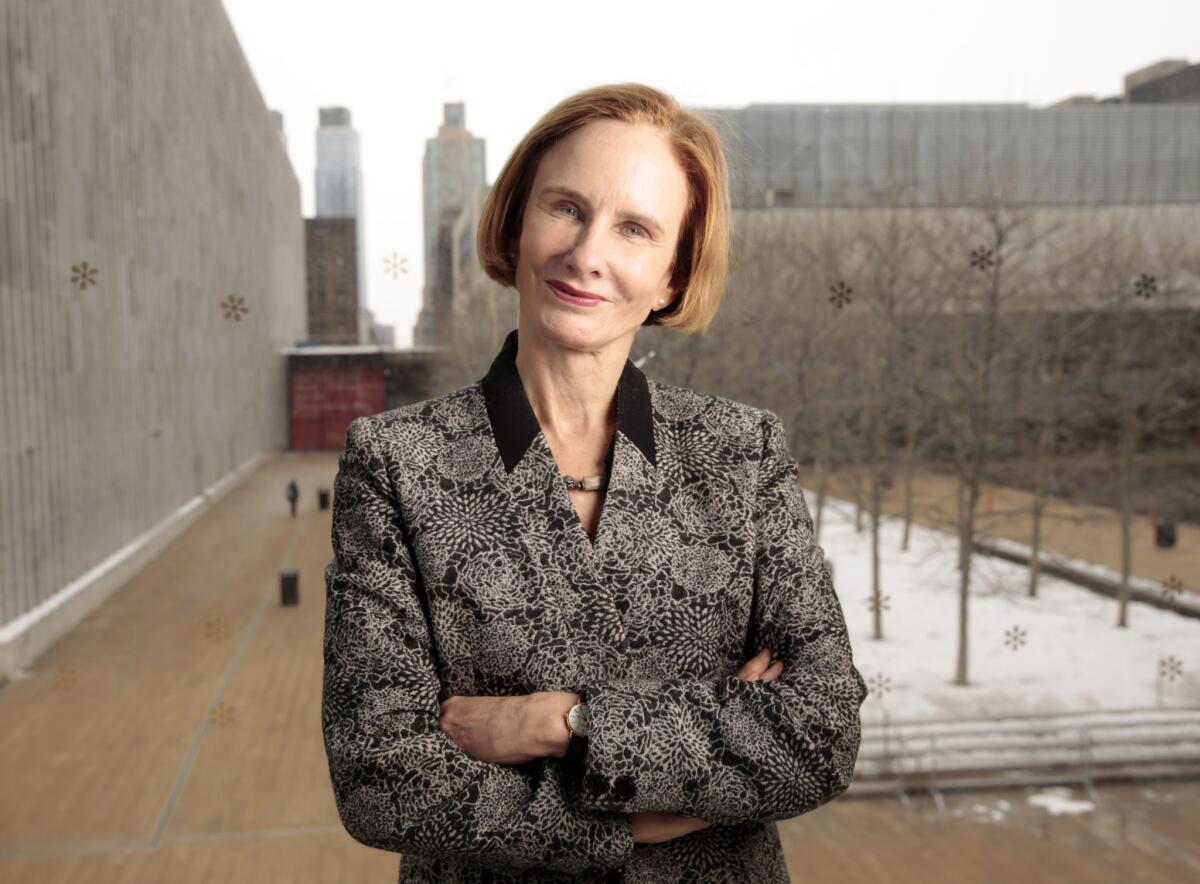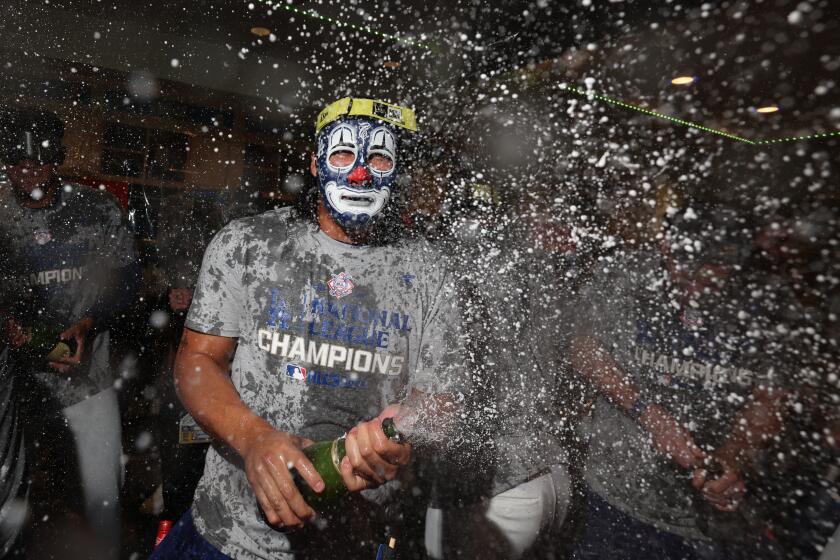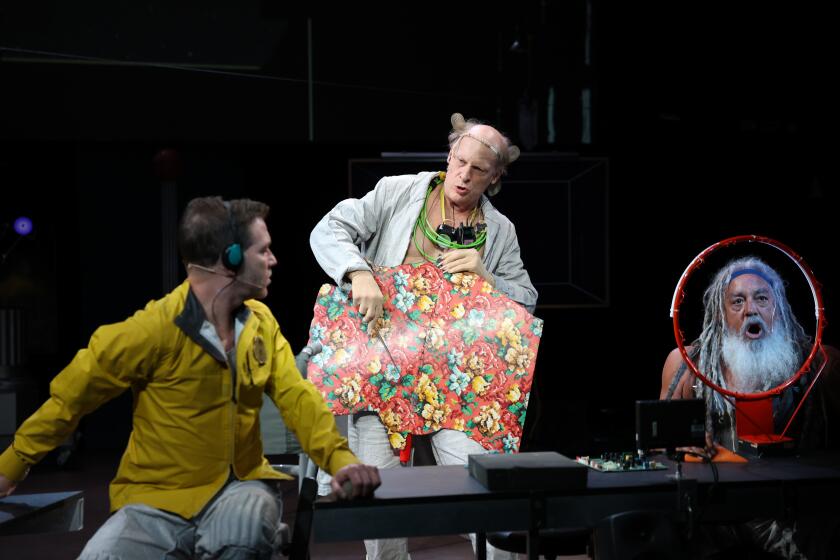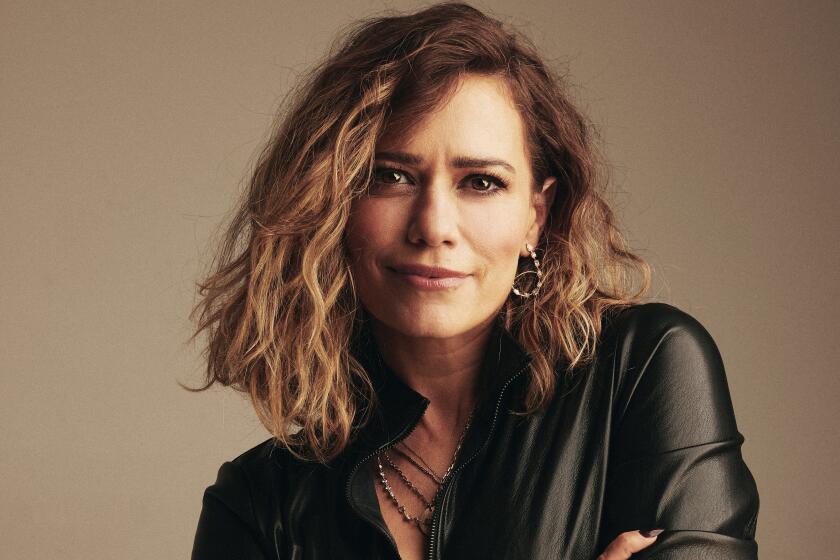Critic’s Notebook: How Lincoln Center manages the kind of programming L.A. Music Center needs

Jane Moss is head of programming at Lincoln Center.
From the day it opened, Lincoln Center, one of the world’s grandest arts complexes, has struggled to get it right. That first night in 1962 in Philharmonic Hall (now Avery Fisher Hall and soon to be renamed after David Geffen) was not a great success.
It was obvious almost from the evening’s first downbeat that the New York Philharmonic had traded the acoustical glories of Carnegie Hall for a new building with a dry sound that robbed a great orchestra of presence and bloom. Even so, there could be then, and there can be now, no overestimating Lincoln Center.
The institution has always wanted to be more than just a landlord and babysitter for its resident companies, which today include, along with America’s oldest orchestra, the world’s largest opera company (the Metropolitan Opera), Lincoln Center Theater, New York City Ballet, the Juilliard School, a performing arts library and a ballet school, as well as major organizations devoted to chamber music, film and jazz.
But by 1992, a complacent Lincoln Center’s two main presentations — the summer Mostly Mozart Festival and Great Performers, a series of star turns by famous musicians — had become moribund. Then Lincoln Center hired Jane Moss as vice president of programming, a title she took to mean rethinking and revitalizing programming for a new era.
“I was largely unknown and a very untraditional choice,” she told me over coffee on a cold winter morning in a Lincoln Center cafe. “I think I was hired because I said I was the only person who could do the job. I have no idea where that idea came from, but I did have familiarity with more than one discipline.”
In fact, Moss, a slight and soft-spoken woman with a disarming confidence, had to have been the least likely of all the possible candidates capable of giving Lincoln Center a far-reaching identity, the kind of thing Los Angeles’ Music Center desperately needs. A former arts consultant, her background was primarily in theater; she had headed the off-Broadway Playwrights Horizon.
The utopian task Moss said she alone could do would be to galvanize an elephantine organization into employing its massive resources toward the rejuvenation of the very art of performance. It’s an ongoing struggle, but the Lincoln Center where Moss now holds the position of artistic director is daring in ways unimaginable when she began 23 years ago.
New and different
What’s changed is that Mostly Mozart, where Mozart mashes with the new, has become maybe the hippest summer music festival in America. Great Performers is no longer the same old same-old string of superstars but New York’s principal importer of some of the most exciting musical projects in the world. These have included the Los Angeles Philharmonic’s “Tristan Project” and staging of John Adams’ “The Gospel According to the Other Mary.”
Moss has begun new festivals and series and revitalized the old ones. By boldly employing venues for programs outside the campus, such as the 19th century Park Avenue Armory, she has liberated Lincoln Center from the Upper West Side and made it part of the fabric of greater Manhattan.
Although she was treated at first with considerable skepticism by the New York press for her lack of credentials, Moss says her theater background proved advantageous. “You certainly look at the concert experience differently if you come from theater,” she explains. “A concert is an act of theater, but music people don’t always see that.
“The other thing that happened is that, while I always loved music, this position turned that into a far deeper and more powerful love affair. The music expanded me and brought enormous passion, because it was like a discovery.”
Moss describes what happened as entirely symbiotic. In her attempts to change Lincoln Center, it changed her and that then made her all more passionate about changing Lincoln Center even more, and on and on. But reality also has a nasty way of unsettling love affairs.
“The real reason I was hired,” she finally admits, “was that the system wasn’t working. Ticket sales were down.” Relying on celebrities to fill halls was proving increasingly difficult for the simple reason there were fewer classical music celebrities during the decline of the record industry, which had long served as the star-making machinery.
The physical plant wasn’t such a hot attraction either. “We were Avis to Carnegie Hall’s Hertz in terms of concert halls,” Moss says. “My response to that was, ‘Why be a car?’
“When I arrived, you went to the concert hall and there was this god on stage and you, the audience member, were thrilled to be in the presence of Yo-Yo Ma or some great maestro. You were buying a ticket to go to church.
“But that’s not what audiences are interested in anymore. They want to have an experience and be part of the experience. They want to be in the same room as Gustavo Dudamel, not cheering from afar. They want to feel as though they and the artists are having an experience together. That’s a big change. And that’s also very hard to achieve night after night.”
Ultimately Moss describes most of what she does as building long-term relationships with artists she feels display an out-of-the-generic-box “creative bent above and beyond doing the best Brahms symphony.” She cites among the most important three Angeleno artists Esa-Pekka Salonen, Peter Sellars and, most recently, Dudamel — all of whom happened to have been initially received with suspicion (if not downright hostility) from traditional New Yorkers and the press.
But for Moss, trusting artists means trusting artists, and innovation is not merely a quick way to make a buck but also a gradual process requiring conviction and perseverance. Behind it all is the idea that whatever she presents must have a purpose that resonates with the world we live in.
Five years ago, for instance, she brought Hungarian conductor Ivan Fischer to lead a Beethoven symphony cycle of back-to-back performances with a modern orchestra and a period instrument ensemble. One of Moss’ early novelties was a New Visions series, including what was in 2001 controversial and is now a legend: Lorraine Hunt Lieberson’s shockingly moving performances of Bach cantatas staged by Sellars when the great mezzo-soprano actually was in her last stages of life.
Moss enlivened Mostly Mozart acoustically by moving the stage forward into the auditorium. She initiated late-night recitals after the concerts in a nightclub-like setting before new-music clubs became all the rage downtown and in Brooklyn. She also created an enduring connection between Mozart and the audience, making the plucky Brooklyn-based International Contemporary Ensemble a regular part of the mix. Next year she will celebrate the 50th anniversary of Mostly Mozart by commissioning 50 composers to write short pieces for ICE.
Moving parts
There are bewilderingly many moving parts to Lincoln Center, and Moss’ purview might seem overwhelming. (It’s hard to state what her budget is, since each series has its own staff and much of the funding comes from the resident companies.) She is also responsible for all the summertime outdoor activities, which include swing dancing and free concerts and which range from popular music to the avant garde (last year she premiered John Luther Adams’ “Sila,” which will come to the Ojai Festival in June).
She began the Lincoln Center Festival, America’s premiere international summer festival but doesn’t run it (it’s a full-time job). The American Songbook series had originally been intended as an easy-to-sell tribute to American standards. Her response was: “No, let’s diversify, so that we can really see what’s happening in American song.” It is now a series so far-ranging that this season it included a collaboration between Steve Reich and Stephen Sondheim.
When asked whether what she has accomplished in New York might be exportable to the Music Center, which leaves artistic vision up to its resident companies and seems increasingly dysfunctional compared with Lincoln Center, Moss says she doesn’t have an answer to that. “But,” she warns, “you have to fight really hard to have an artistic vision within any construct that has many different functions, such as real estate and managing constituents.”
Moss might also add that you need to take everything personally and trust your instincts.
For instance, it dawned on her during a yoga class that she was not the only New Yorker overwhelmed by distracting options, responsibility, technology, life. Five years ago she began the White Light Festival as a successor to New Visions and her own way to cope.
She says that when she first attempted to articulate her idea, she worried that it sounded like spiritual gobbledygook. “I thought my career was over,” she says after her first interview about the project with the New York Times. “I could just see the headline: ‘Jane Moss Goes Oprah.’”
She nonetheless marketed the festival not as buying a ticket to hear, say, Bach’s “St. Matthew Passion” or the Malian singer Rokia Traore but as “really buying a ticket to yourself.” The idea that music, whether spiritually themed or not, can offer spiritual fulfillment struck a chord, and not only with audiences. “Artists,” Moss discovered, “like not being in the next subscription concert, “but in something special. That’s every artist’s dream.”
The success of White Light — her presentation of Sellars’ staging of the “St. Matthew Passion” with Simon Rattle and the Berlin Philharmonic was the hottest classical music ticket in New York last fall and has served only to further radicalize Moss’ vision for the role of art in our technological age.
“I think that live performance is going to be the most avant-garde aspect of our lives if these devices keep making inroads into how people are relating to the world,” she says. “It may become the one place left for people to have a collective experience.”
Lincoln Center has been undergoing major renovations, and next up is finally rectifying that initial concert hall disaster now that Geffen has given $100 million toward a $500-million renovation. Moss has advice.
“What I find strange is that any discussion of any new concert hall on the planet is all about technology. Make sure we have 4,000 different gizmos in the lobby so everybody can interact with a computer screen before they enter. Maybe this is just me, but why not turn it into a Zen temple?”
Twitter: @markswed
Third in a series of occasional conversations with arts leaders who welcome rather than fear the future.
More to Read
The biggest entertainment stories
Get our big stories about Hollywood, film, television, music, arts, culture and more right in your inbox as soon as they publish.
You may occasionally receive promotional content from the Los Angeles Times.











